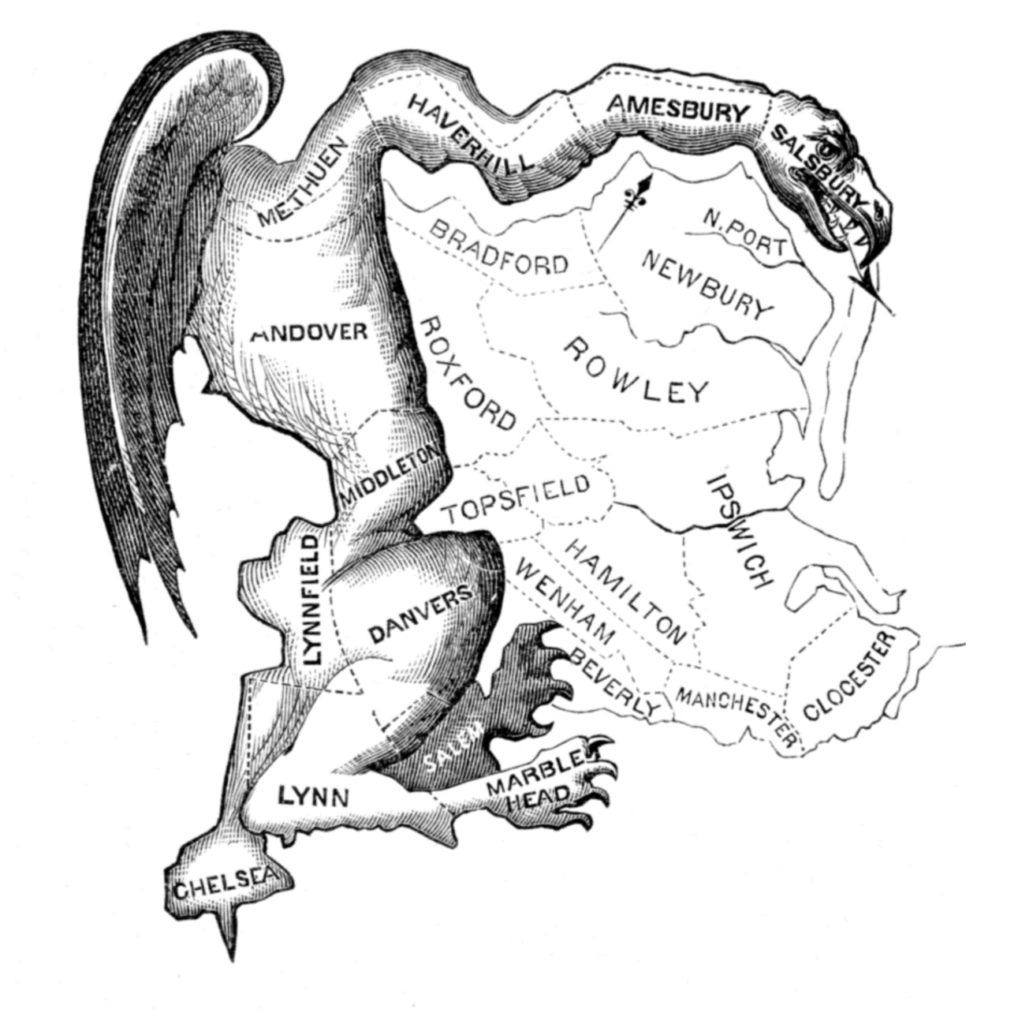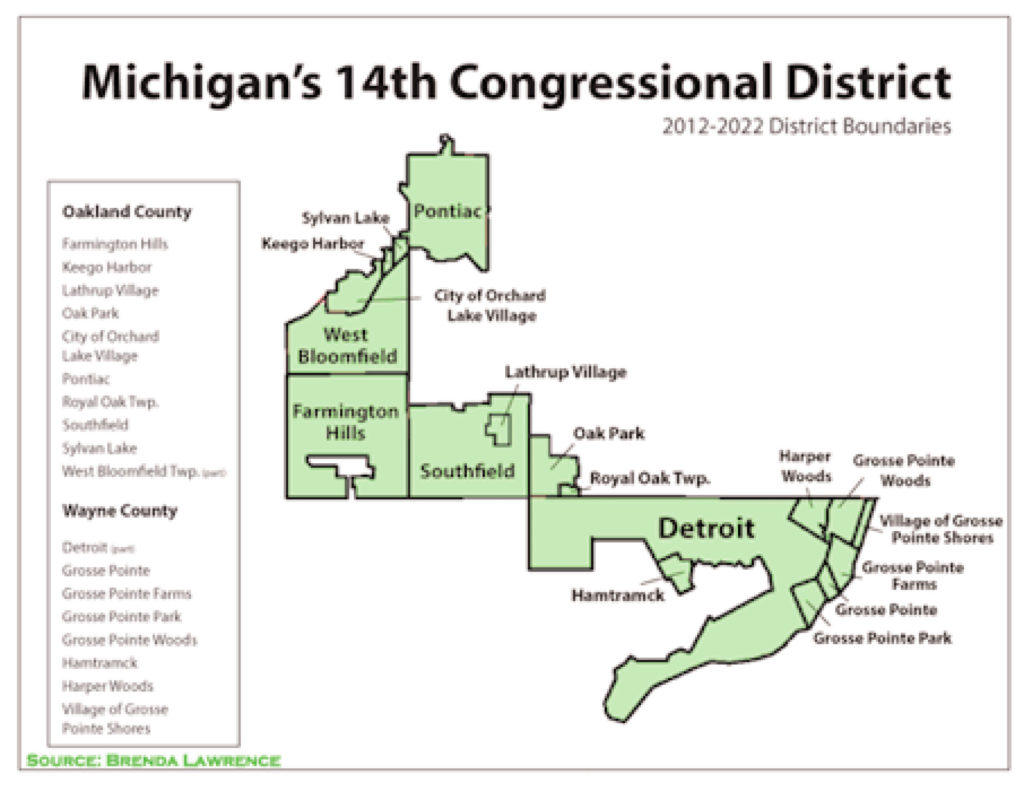By Paul Rozycki
The people who cast the votes decide nothing. The people who count the votes decide everything.
-Joseph Stalin
In a democracy the winners in elections are supposed to be decided by whoever gets the most votes. And that is usually true. However, the Soviet dictator’s words may be an ominous warning today. That basic, simple democratic rule can be manipulated to give victory to those who don’t get the most votes. For example in 2016, when Michigan voted for the state House of Representatives, the Democrats won 18,000 more votes than the Republicans, statewide. (If two partial-term candidates are excluded, the Republicans had a slight edge.) In 2014 the margin was even larger, when voters gave and extra 30,000 votes to the Democrats. Yet, in the House 63 Republicans and 47 Democrats have been elected. When the votes for the U.S. Congress were tallied up in 2014 the Democrats had about 50,000 more votes that the Republicans in Michigan. Yet we elected 9 Republicans and 5 Democrats. Even when the Republicans earned a slight majority, their advantage in the legislature was magnified many times. In other years, and in others states, similar patterns were common.
On the national level, even stranger patterns develop. While we’ve all heard about how unpopular Congress is—only a little more than ten or fifteen percent of the pubic approve of what they are doing—barely ahead of cockroaches and telemarketers. So members of Congress should be in big trouble on election-day — right?
Not quite. Most members of Congress win reelection, and they win by a landslide. Here’s a few numbers. In 2016, of the 435 members of the U.S. House, only eight incumbents lost their election. The average margin for winning was 37 percent—a huge landslide. Only 17 of the 435 Congressional elections were decided by five percent of the vote or less. Only 33 seats were decided by 10 percent or less. And in 42 of the 50 states there were no truly competitive elections for the U.S. House.
How could that happen? There are several causes, but one of the most significant is the ability of one party to draw odd shaped election districts or “gerrymander” the election process. By many measures, Michigan is considered to be one of the most gerrymandered states, but hardly the only one.
The origins of gerrymandering

The original Gerrymander in 1812
The process of drawing oddly shaped election districts is as old as the nation itself. The term “gerrymander” comes from Elbridge Gerry, one of the Founding Fathers who served in the Continental Congress, was a signer of the Declaration of Independence and served as vice president under James Madison. He created an oddly shaped district in his home state of Massachusetts to help his party. The election district wrapped around parts of the state and, based on a political cartoon of the day, some of his opponents said it resembled a salamander—thus the name gerrymander, which stuck for the last two hundred years.
As a result of several Supreme Court decisions in the early 1960s, states are required to redraw all of their election districts at least every ten years. After the census is taken at the start of each decade, states are required to draw election districts with equal number of people in each. In this redistricting process, the Supreme Court required election districts to include approximately the same number of people, but it didn’t say much about what shape they could be. That opened to the door to shaping districts to favor your own party, or gerrymandering. The state legislatures are in charge of the process, and that’s where the politics comes in. In the first year of a decade, the majority party in the state legislature has the power to create election districts and shape them as they see fit, for the next ten years.
How it’s done
The process of creating gerrymandered districts is both fairly simple and has grown to be a very complex computer-generated process. In its most basic form, you want to give your own party a good working majority in as many districts as possible, and to leave the opposition with huge majorities in just a few districts. The common terms for this are ‘packing’ and ‘cracking’ where all your opponents are ‘packed’ into a few districts and where their supporters are ‘cracked’ or broken up so they are not a majority in any other district. The diagram to the left illustrates the basic process.
As you can see, though the overall number of voters for each party does not change, drawing different districts does change the outcome.
Based upon past voting records in the past it has been fairly easy to draw election districts to favor one party or the other. Modern computer technology makes the process even easier and more precise. And while Republicans are the current beneficiary of gerrymandering, Democrats have taken advantage of the same process when given the chance.
While the most common form of gerrymandering is to favor one party over the other, it can be used anytime people are separated by geography. Racial gerrymandering has a long history in both the north and the south and it has been use to both prevent the election of minorities, or (in some cases) to assure minorities have a better chance of winning. There are also more than a few examples of what can be called ‘personal gerrymandering’ where a particular candidate’s home is placed in one district and a prospective opponent’s is placed in another. Though the drawing of district lines usually favors incumbents, sometimes two incumbents of the opposing party will be thrown together in a new district forcing them to spar with each other for the next election.
 All of this juggling of district lines can produce some very oddly shaped election districts. One example is Michigan’s 14th Congressional district in the Detroit area that winds from Detroit through several suburban cities and townships and up to Pontiac.
All of this juggling of district lines can produce some very oddly shaped election districts. One example is Michigan’s 14th Congressional district in the Detroit area that winds from Detroit through several suburban cities and townships and up to Pontiac.
The effect on our politics
All this gerrymandering distorts our politics in a number of ways.
First, when most elections are decided by landslides, why bother voting? If you are a Republican in a district where Democrats always win with 70 percent of the vote, what motive do you have to turn out if you know you are going to lose? Ironically, the same is true for Democrats. If your party is all but certain to win, who bother? There are many reasons that Americans have one of the lowest voting rates among democratic nations, but gerrymandering is a major one.
Second, since the general election offers little real competition, the real election is usually party primary, where the voters get to nominate their candidates. But here’s the problem. Our primary elections in Michigan are normally held in August and the turnout is typically very low. On average, about 20 percent of the voters will bother to turn out for a primary. Last August, the contest for the Flint City Council drew just a little over seven percent of the voters.
Third, the low turnout in the primary is only part of the problem. Those who turn out are not typical voters. Primaries draw party activists and those with strong ideological views — conservative Republican and liberal Democrats. The candidates nominated often don’t represent the mainstream of either party or independent voters.
Fourth, because the real election is the primary, most candidates aren’t afraid of losing in the November general election. They fear facing a primary challenge within their own party. And if you have been elected by activist liberal Democratic voters or activist conservative Republican voters, the last thing you want to do is to compromise or work with the opposing party. You’ll be seen as a traitor, and will face a challenge from a more liberal or conservative opponent within your own party. If you want to win, you need to appeal to the more extreme wing of your party. There are many causes for our gridlock in Washington, and the division within our nation, but gerrymandering is a major one.
What’s being done about it?

Paul Rozycki
Right now there are at least two major attempts to change the gerrymandered map of Michigan and of the nation. One group is taking the issue to the U.S. Supreme Court, in an attempt to rule on what is or isn’t a fair way to draw election districts. In Michigan, there is a petition drive to create a non-partisan board that would oversee the redistricting in the state. Both of those will be discussed in next month’s East Village Magazine.
EVM political columnist Paul Rozycki can be reached at paul.rozycki@mcc.edu.


You must be logged in to post a comment.